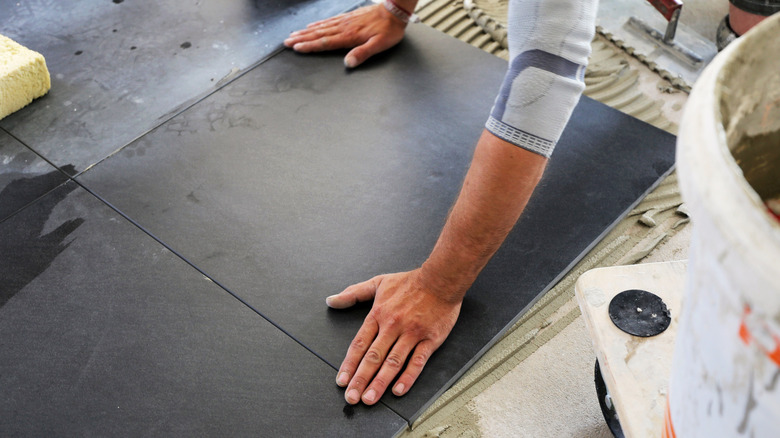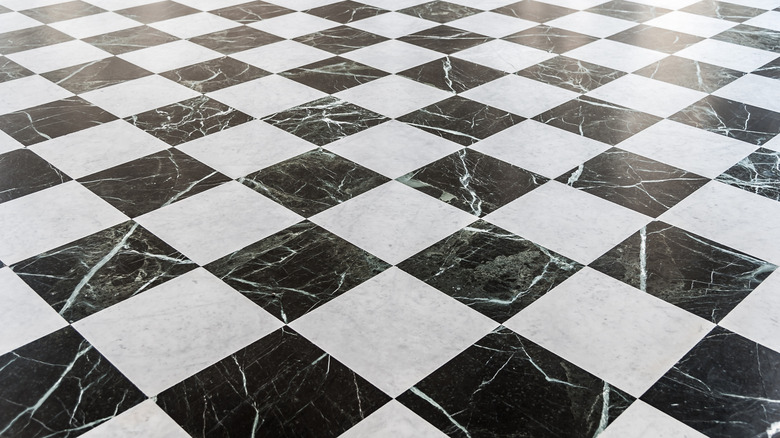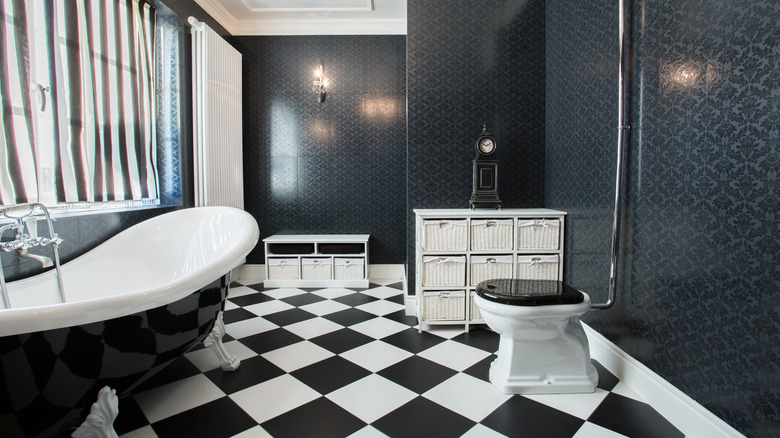This Flooring Trick Is The Key To Making Your Narrow Space Feel Wider
When installing floor tiles, one crucial thing you'll need to consider is how you want them arranged. The most common and easiest to install solution is a straight lay, which aligns them in straight rows, per MSI. This choice is ideal for those using loud or patterned tiles, as it provides the cleanest and least complicated appearance. Other options include a basketweave pattern, which looks like the tiles are tucked beneath and above one another and adds texture and interest to your space.
You could also choose a running bond, which staggers the lines of tiles so that the middle of the bottom tile matches the edge of the one above. This look is great at hiding small mistakes in the architecture of the home. There's another innovative tile pattern you could test out, which would benefit those who want to make narrow areas of their home appear much wider.
A classic choice
Instead of the above choices, you could lay down your tile in a diagonal pattern. This option utilizes square tiles, just like the straight lay. However, instead of placing them in straight rows, they're placed in diagonal ones to make the squares look like diamonds. Placing your tiles in this pattern can make a tiny floor appear more spacious. MSI says that this is because the observer naturally focuses on the center of the diamond or the largest part, which can make each tile, and, therefore, the whole floor appear bigger.
If you decide to install using this pattern, DIY Power Couple's tutorial on their YouTube channel provides some insightful advice. First, ensure that all your tiles are at a 45-degree angle. Second, start installing from the middle and move outwards, as you want the cut pieces only to be placed along the outer edges. Finally, understand that this pattern will require more work and planning, as you'll need to cut more tiles down to size than you would with a straight lay.
Where to use this pattern
Because this choice will make your floor look larger, it's most effective in small spaces. For instance, it's typically seen in galley kitchens, crowded bathrooms, entryways, mudrooms, or laundry rooms, as these areas are usually relatively small. A considerable benefit of this look is that it can work in any home, no matter your preferred style.
While the effect will be the same no matter which colors you choose, alternating between two contrasting tones is a classic choice. Sometimes called a checkerboard, this flooring often pairs white with black or another dark color like gray, red, or green. This choice is timeless because it's been used throughout history — in fact, We're the Whites says that it was even used during the time of the ancient Egyptian temples. Nowadays, these floors are typically associated with the 1950s in America, as they were often seen in both homes and diners at the time.


